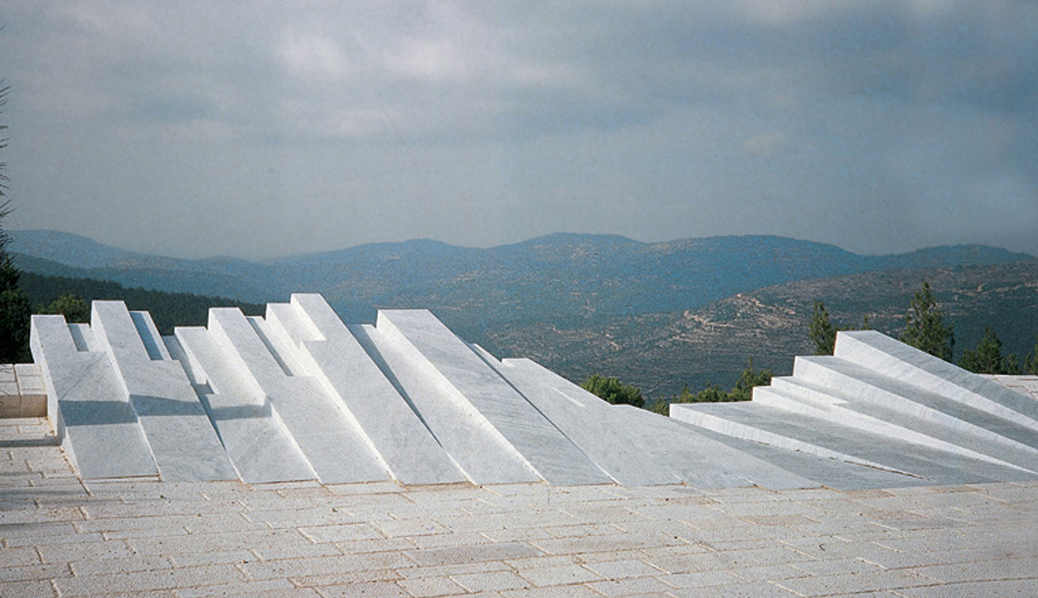A meeting with several friends in the Jerusalem mountains led us to our first acquaintance with a sculpture that is unusual in both its appearance and its location. Most of us had previously been unaware of its existence. As we approached and the entire sculpture came into view, we were thrilled by the sight: on the edge of the mountain, at the end of the path, a sculpture was revealed, embraced by the immediate environment and set within the more distant landscape – Aminadav Forest and the Jerusalem mountains. The sculpture continues the line of the mountain as it ends above the valley, appearing as if it has always been part of the breathtaking scenery before it. Exuding coolness even in the summer heat, the shadows cast by tree branches on the white keyboard, and the accompanying chirping of the birds – nine of us stood in unceasing wonder.
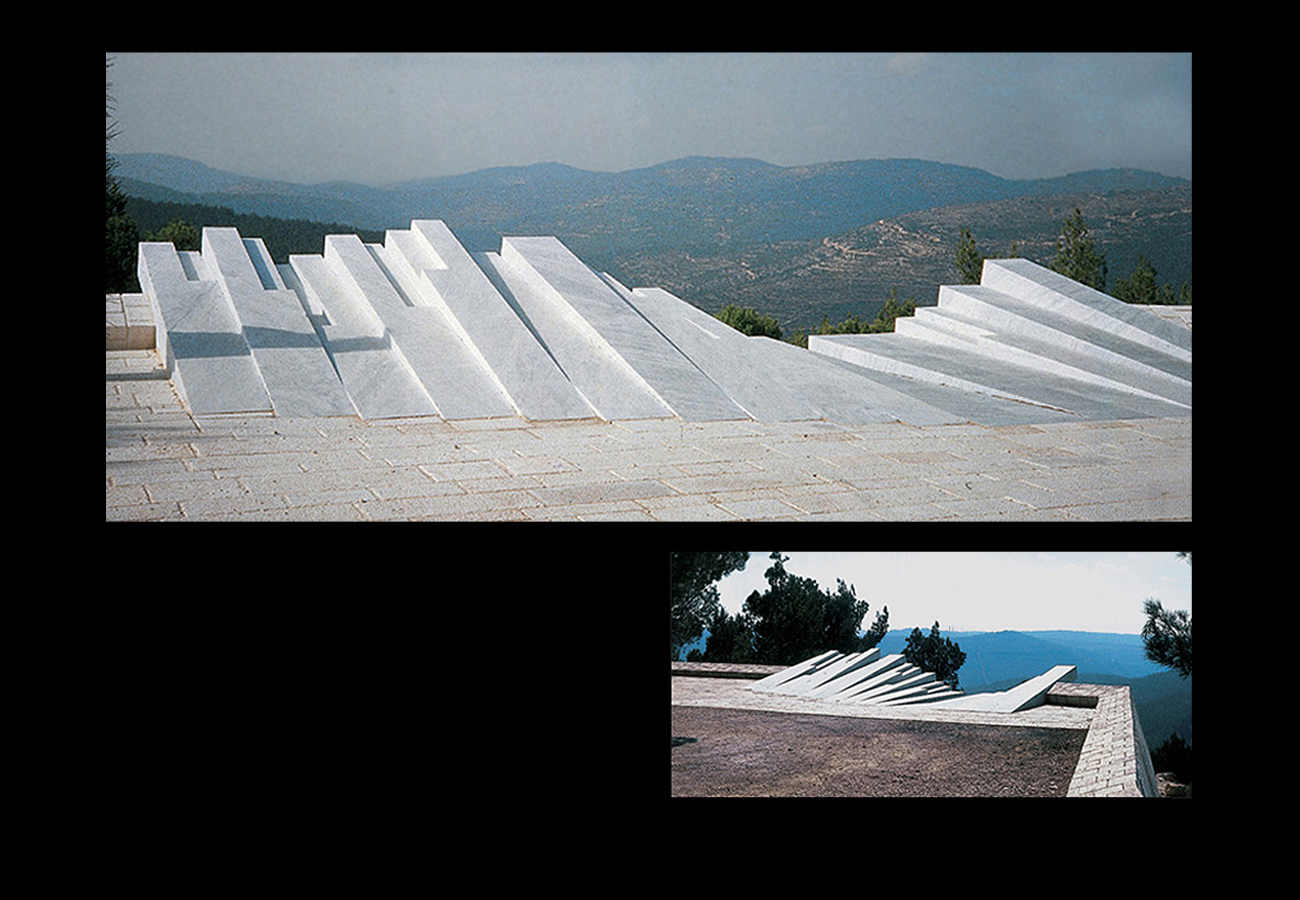
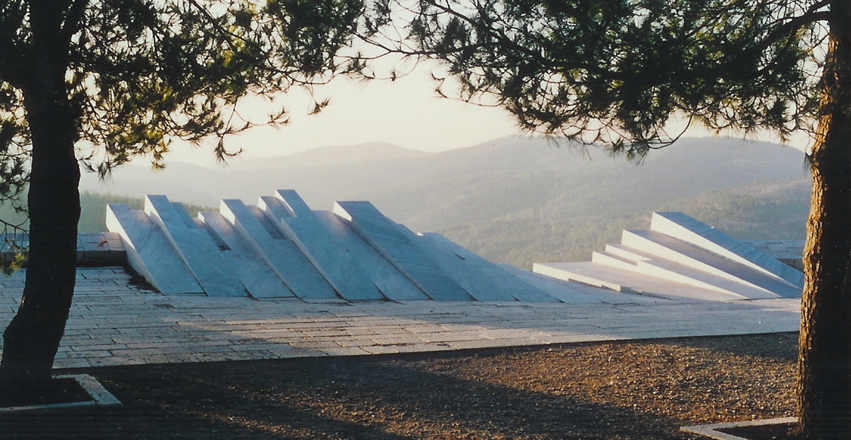
The idea of memorializing the virtuoso pianist with a work that naturally emerges from landscape, as if it grew in the Aminadav Forest, like the natural world surrounding it, and the choice of material – white marble – fascinated us all. Some time later, we discovered the memorial plaque in Rubinstein’s memory, but we did not know that the observation point also houses the artist’s remains. More on that below.
We contacted to the sculptor Israel Hadany, and asked him to recount the circumstances which brought this extraordinary work in being, and for some eye-catching photographs. Hadany consented happily.
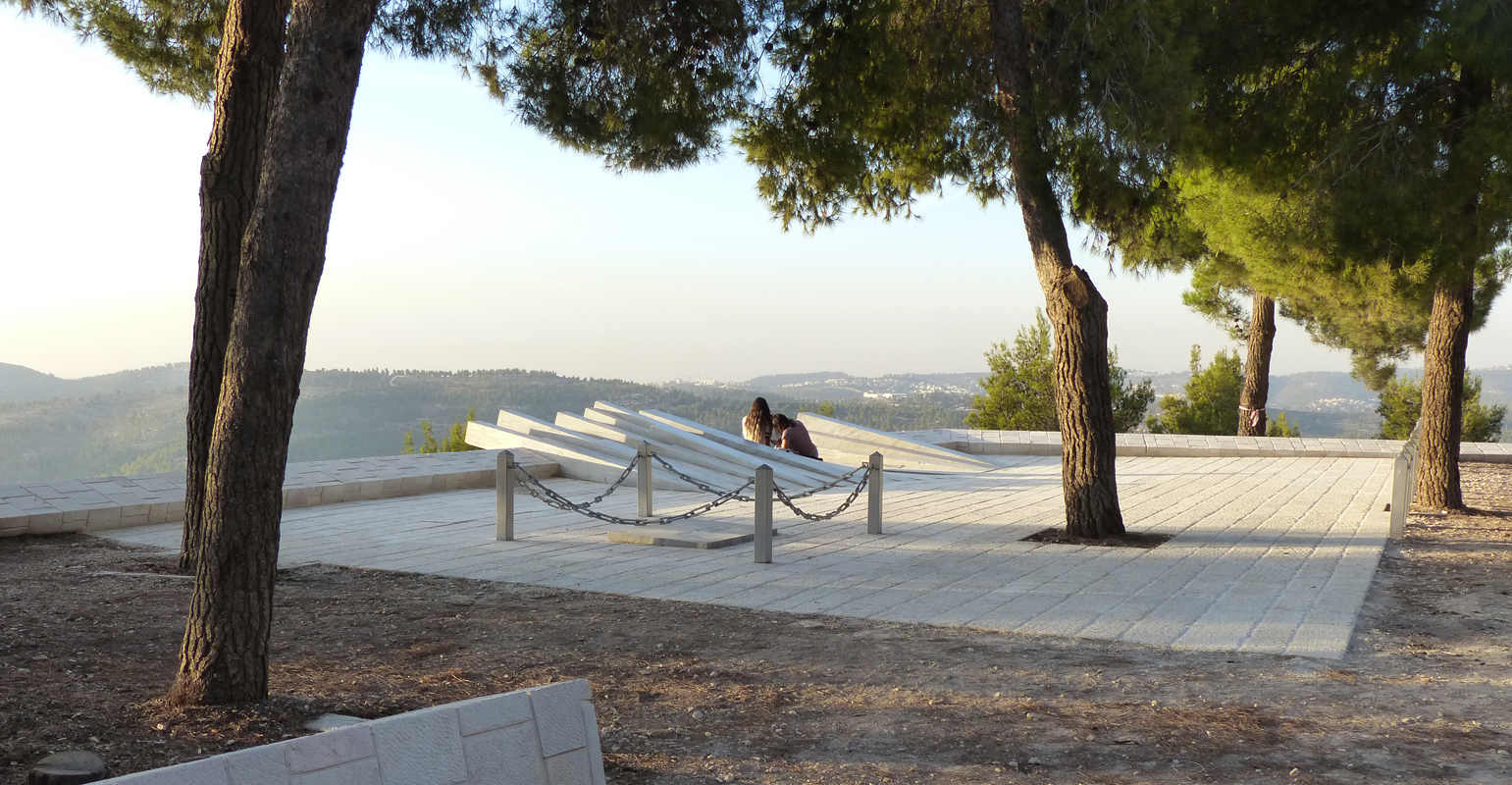
In 1982, at the initiative of the Jerusalem Foundation and in collaboration with the Jewish National Fund, construction of the “Arthur Rubinstein Observatory” began on the western edge of the Aminadav Forest. The observatory plaza and the access path to it were designed by the late landscape architect Yosef Segal.
Arthur Rubinstein (born in Poland, 1887 and died in Switzerland, 1982) was one of the greatest classical pianists of all time.
In his will, the maestro requested that his ashes be scattered in the forests of Jerusalem. Although the limitations of Jewish religious practice prevented full compliance with his instructions, they were kept in part. It was decided to bury an urn containing his ashes in the Aminadav Forest, which he knew well and loved.
Dr. Micha Levin (artistic advisor to the Jerusalem Foundation at the time) commissioned the sculptor Israel Hadany to design a sculpture in Rubinstein’s memory, one that would have clear connections to both the observatory plaza and the distant landscape.
He describes the experience, and a visitor’s encounter with the sculpture as follows:
A dirt path on the western edge of the Aminadav Forest leads visitors to the Arthur Rubinstein Observatory. Walking down the path, a visitor first notices the white walls of the observatory plaza between the trees. Approaching further, he discovers the memorial sculpture embedded in and towering above the plaza, as if tied to the distant landscape. The sculpture is made of white marble blocks unified by a dynamic structure suggestive of piano keys in motion. The sun’s movement reshapes the shadows cast across the sculpture and enriches its rhythmic harmony. Its flow appears, in turn, to respond to the movement of the mountain ranges, in all their glory, visible to the viewer gazing westward.
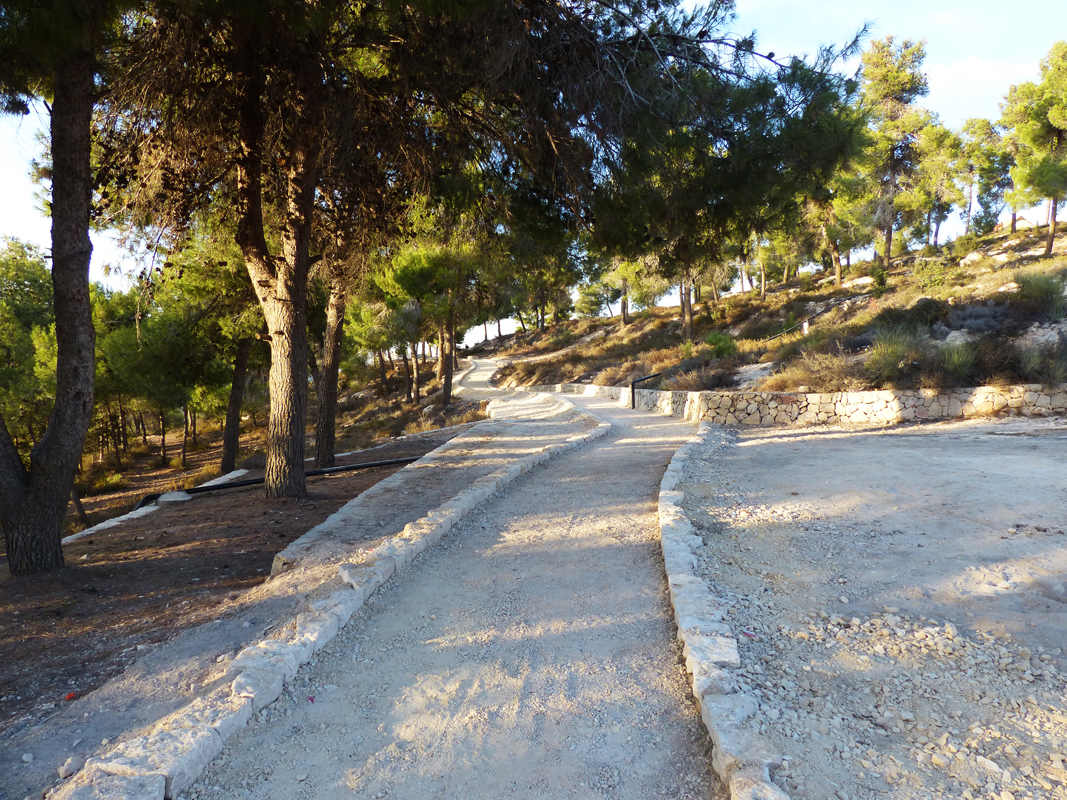
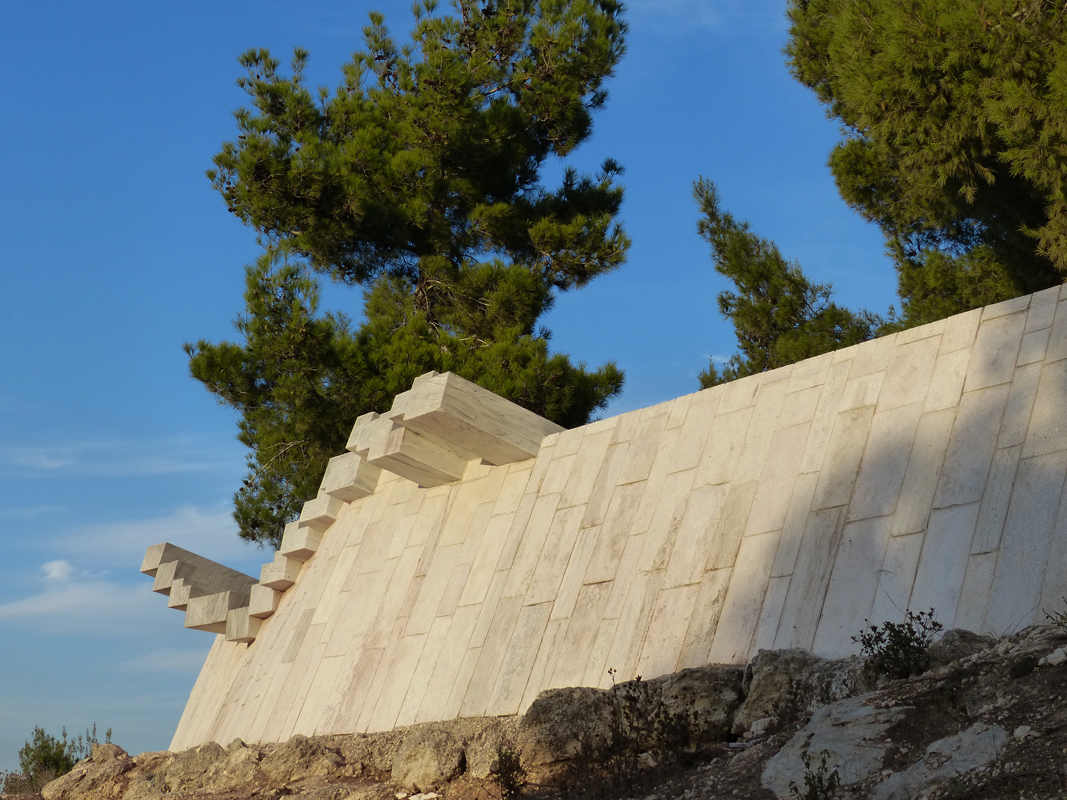
Most unfortunately, the sculpture has sustained some damage. Since their dedication in 1983, there have been several changes to the sculpture and the observatory.
During the second intifada, the sculpture was damaged; its front edges were broken (probably by hammer blows), making it necessary to shorten its keys, making them about 20 cm shorter than their original size.
A few years ago, the eastern side of observatory plaza was fenced to prevent off-the-road motorcycles from “skiing” down from the top of the mountain, onto the sculpture’s keys and from there to “motorcycle descent” on the steep slope below.
It is important that all visitors to the Arthur Rubinstein Observatory contribute to this cultural monument, by becoming acquainted with the site dedicated to the memory of a great musical artist, and telling about the enjoyment and importance of visiting the place. We take a deep bow to the music of the late Arthur Rubinstein, and to Israel Hadany who provided us with multifaceted enjoyment at the Observatory
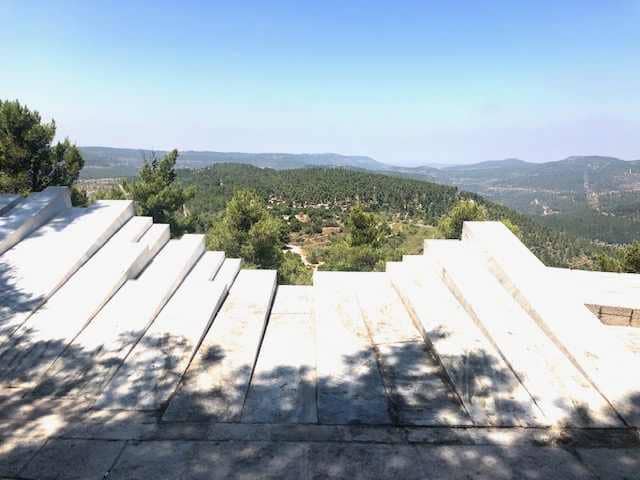
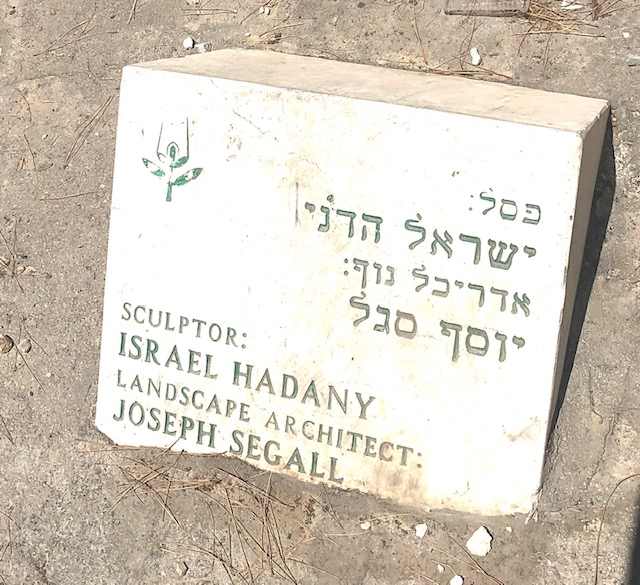
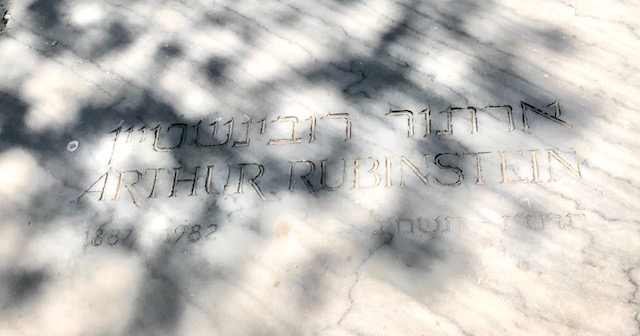
As part of the domestic tourism that has been expanding ever since the “skies closed,” we recommend taking a fuller look at the work of sculptor Israel Haday, particularly the two sculptures below: Sails in Ashdod and Layers, on the cliff above the Ramon Crater. Both of these sculptures create an impressive dialogue with the surrounding landscape.
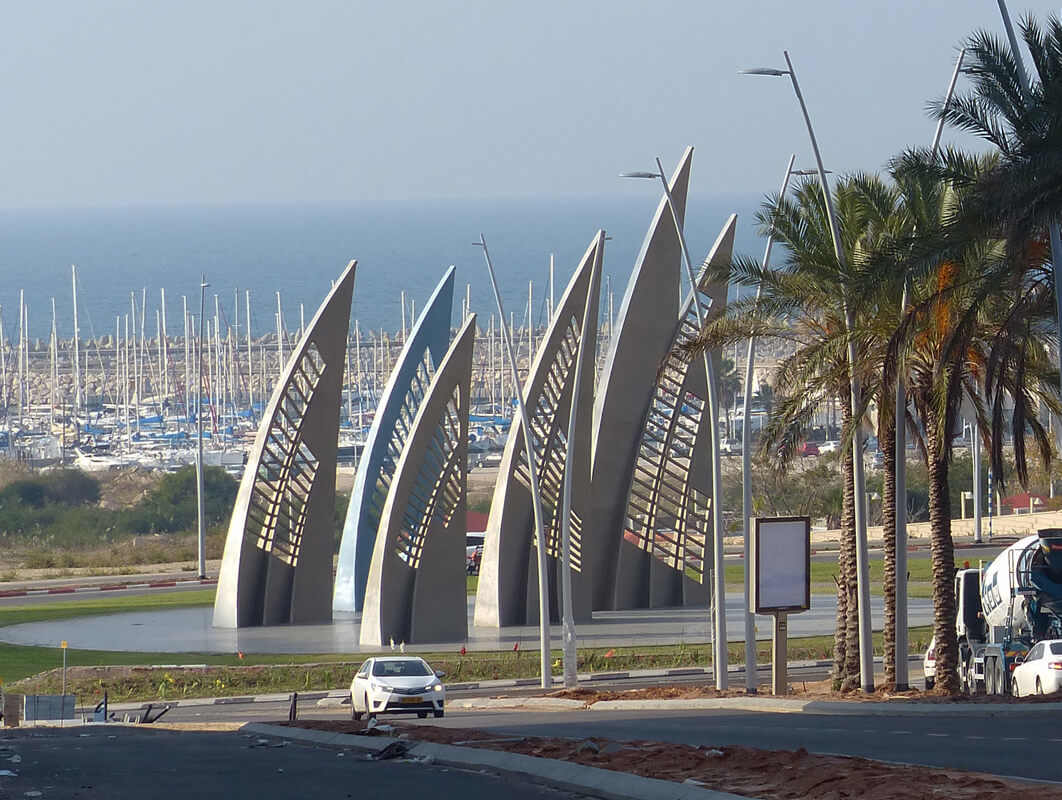
Sails sculpture in Ashdod
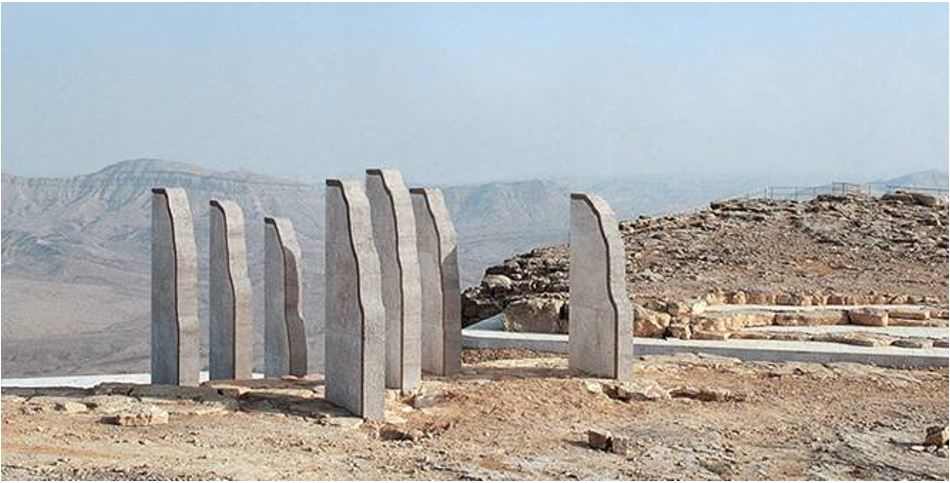
Layers sculpture in Mitzpe Ramon



